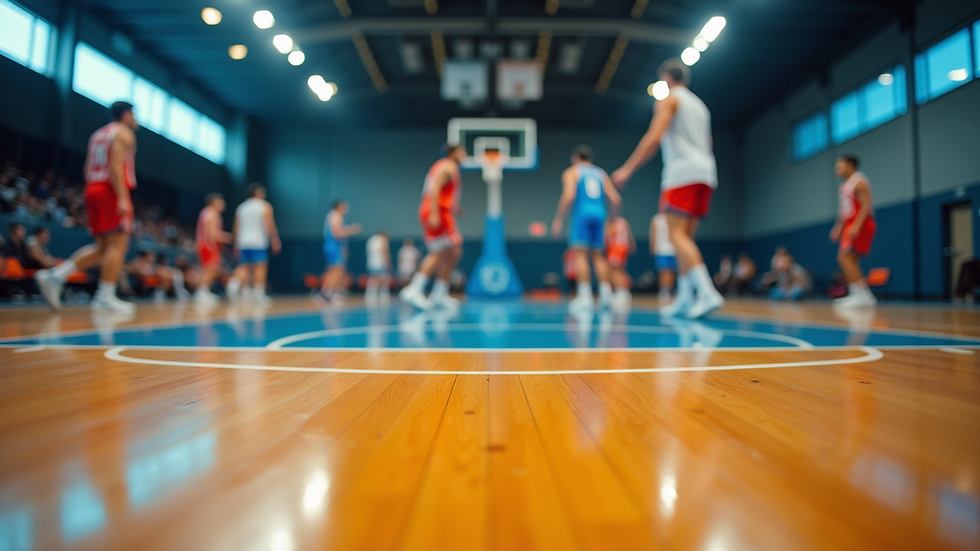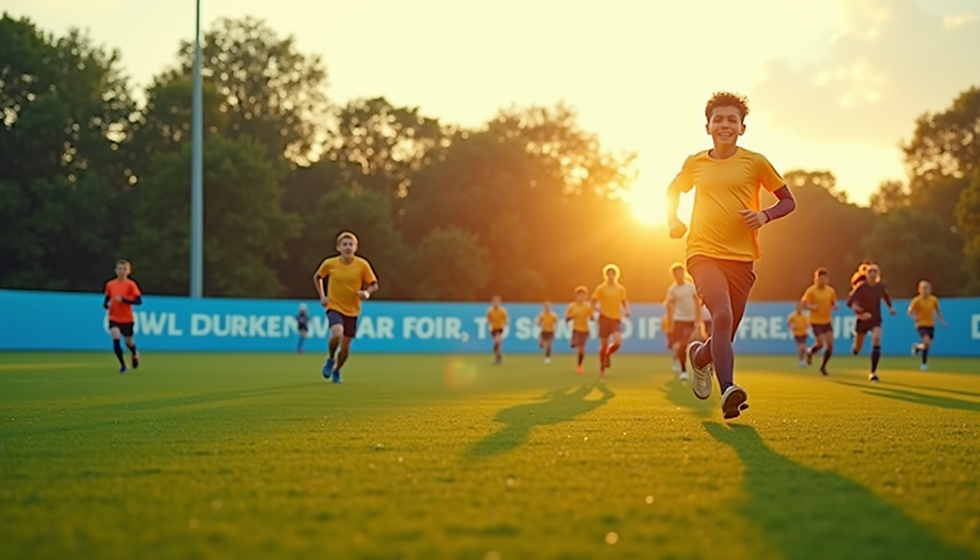Unleashing Potential: How Travel Basketball and High School Hoops Can Thrive Together
- 1risingstar23
- May 26
- 4 min read
Basketball is more than just a game; it’s a passion that connects athletes, coaches, and families alike. At the core of this passion are two primary pathways for young players: travel basketball and high school basketball. Each offers unique benefits and challenges. Instead of competing against each other, these two can become powerful allies in developing talented athletes.
In this blog post, we’ll explore the pros and cons of travel basketball and high school basketball, as well as how these programs can work together to cultivate skilled players.
Understanding Travel Basketball
Travel basketball has gained immense popularity, often regarded as an elite level of play that enables players to refine their skills in a broader arena. Let’s take a closer look at its advantages and disadvantages.
Pros of Travel Basketball
Higher Competition Levels
Travel teams compete against top talent from various regions. For example, a player participating in a national tournament may face competition from teams ranked in the top 100 across the country, which can drive players to enhance their skills significantly.
Focused Skill Development
Coaches in travel programs typically emphasize individual growth. Players might attend weekly skill clinics focused on shooting mechanics or defensive techniques, resulting in faster improvement in those specific areas.
Showcase Opportunities
Travel basketball offers multiple tournaments that attract college scouts. Statistics show that players who participate in at least three showcases a year increase their chances of being recruited by 20%.
Flexible Schedule
Players can often choose tournament schedules that fit their academic commitments. This flexibility allows for an effective balance between education and training, supporting a well-rounded approach to player development.
Cons of Travel Basketball
High Cost
The financial burden of travel basketball can be significant. Fees can range from $1,500 to $5,000 per season, covering travel, accommodations, and uniforms.
Less Local Community Focus
Participating in travel basketball can reduce local school and community ties. Players may miss out on forming friendships with peers in their high school.
Limited Coaching Stability
Frequent changes in coaches and organizations can disrupt players' development. A player might work with three different coaches in a single season, leading to inconsistent training philosophies.
Pressure and Burnout
The competitive nature of travel basketball can create stress. Studies indicate that 30% of young athletes experience burnout, which can hinder their long-term interest in the sport.
Navigating High School Basketball
High school basketball represents a more traditional pathway for young athletes and is often more integrated into the educational experience. Here are some advantages and challenges.
Pros of High School Basketball
Community Engagement
High school basketball fosters a strong sense of community. Players develop lifelong friendships and receive support from classmates, teachers, and local fans during games.
Structured Environment
High school programs offer consistent coaching and a focus on teamwork. Players learn essential life skills such as discipline and accountability, which are invaluable both on and off the court.
Academic Integration
Balancing academics with sports is an integral part of high school basketball. Players learn to manage their time effectively, preparing them for future responsibilities in college and beyond.
Pathway to College
Coaches in high school programs are often connected within college athletics. For instance, many coaches have relationships with scouts at local colleges, increasing players' chances of being noticed.
Cons of High School Basketball
Limited Competition
Some players may not face high-caliber opponents as frequently as they would in travel leagues. This can limit their growth if they thrive on competitive environments.
Less Focus on Individual Skills
High school programs tend to prioritize teamwork over developing individual skills. A player may not receive the targeted training needed to improve their specific abilities.
Potential for Favoritism
In larger schools, some players might feel overlooked if coaches favor more experienced athletes. This can be disheartening for those who are striving for recognition.
Pressure of Academic Balance
Student-athletes may find juggling academics and sports challenging, leading to stress. Surveys suggest that over 35% of student-athletes report feeling overwhelmed with balancing their commitments.
The Power of Collaboration
Now that we have explored the strengths and weaknesses of both travel and high school basketball, it’s evident that these two systems can thrive together. Collaboration among high school coaches, travel coaches, parents, trainers, and players is essential. Here are ways these groups can work synergistically:
Building Relationships
High school coaches and travel coaches should build strong relationships. By sharing insights on player performance and development strategies, they can create smooth transitions for athletes moving between programs.
Holistic Development
A combined effort on skill development could be advantageous. Travel coaches might offer clinics to high school teams, while high school coaches can help travel coaches incorporate teamwork strategies into their practices.
Encouraging Dual Participation
Playing in both travel and high school basketball can be beneficial for players. With the right guidance, athletes can achieve a balance that allows them to develop their skills while enjoying the social aspects of their high school teams.
Parental Involvement
Parents have a central role in supporting their children's basketball journey. Encouraging participation in both avenues, while maintaining communication with coaches, can help ensure athletes' needs are met and expose them to sufficient opportunities.
Emphasizing Exposure
It is critical for all stakeholders to ensure players receive ample scouting opportunities. By organizing joint showcases where both travel and high school teams compete, they can attract more scouts and increase athletes' visibility.

Unlocking the Future of Youth Basketball
The world of youth basketball is ripe with possibilities. When travel basketball and high school hoops collaborate, they create a supportive environment for player development. By focusing on working together instead of competing, we can nurture well-rounded athletes who succeed both on and off the court.
Embracing the strengths of both programs enhances the experience for athletes, opens doors for success, and helps unlock their full potential for the future. With teamwork among coaches, parents, and players, the next generation of basketball players has a bright path ahead.



Comments